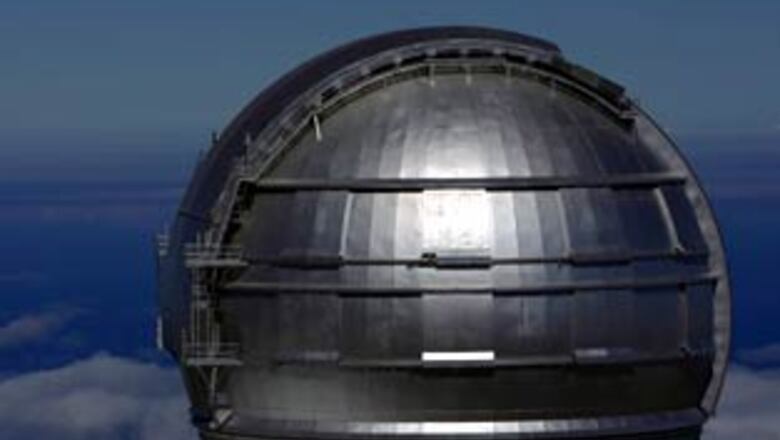
views
Madrid: Thousands of years ago, the original inhabitants of Spain's Canary Islands are thought to have worshipped the Roque de los Muchachos mountain as having magical powers. On Friday, the mountain will officially become home to a telescope billed as the world's biggest time machine.
The instrument will allow scientists to seek new answers to the origin of the universe.
The Grantecan or GTC, which are abbreviations for "large telescope of the Canary Islands", is the biggest among only about a dozen comparable telescopes in the world.
"The GTC is a miracle, a challenge that many regarded as impossible," says Francisco Sanchez, director of the Canaries Astrophysical Institute at Roque de los Muchachos on the island of La Palma.
The telescope, as high as a 14-storey house and with a 35-metre-diameter dome, will be inaugurated by King Juan Carlos.
Since light travels at 300,000 km per second, telescopes are able to record images of events which occurred thousands of millions of years ago.
The bigger the telescope, the more distant the light it can observe, and the further it can travel back in time.
The Grantecan, which has been experimentally observing the unusually clear Canaries sky already since 2007, has a primary mirror measuring 10.4 metres in diameter.
In contrast to older-generation telescopes, the primary mirror of which consists of one piece, the curved mirror of the Canaries telescope is formed by 36 hexagonal segments.
It can capture light over a surface of 82 square metres, making it so precise that it could spot a plate of food on the surface of the moon.
The construction of the telescope, which also features a new generation of instrumental observation techniques, lasted for nine years, six years longer than planned.
Difficulties included hauling parts of the telescope weighing 400 tonnes to one of the world's best astrophysical observation sites at an altitude of 2,400 metres.
Roque de los Muchachos has clear nights and stable wind conditions, comparable to only a few other sites in Chile and Hawaii.
With its powerful mirror, the Grantecan may be able to see distant galaxies come into being, helping scientists to work on solving the riddle of the origins of the universe.
It could yield new information on the chemical components created by the Big Bang that gave birth to the universe 14 billion years ago, on black holes, and on dim planets that had gone undetected by less sophisticated equipment.
The Grantecan could even discover new planetary systems, and give clues to the question whether there is life on other planets.
The telescope, costing about €130 million ($180 million), was financed mostly by Spain, with partner universities in Mexico and United States covering around 10 per cent of the cost.
Future telescopes are expected to have mirrors measuring up to about 40 metres in diameter, and Roque de los Muchachos is hoping to become home to one of them as well.














Comments
0 comment